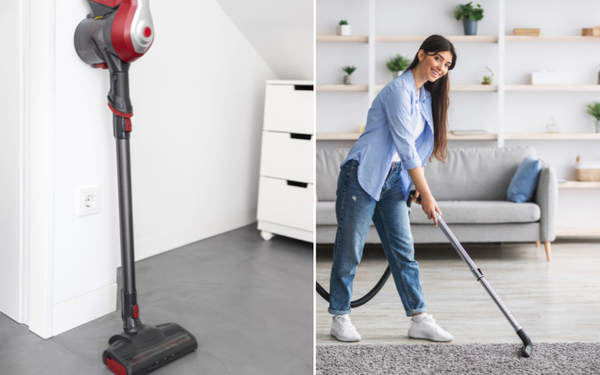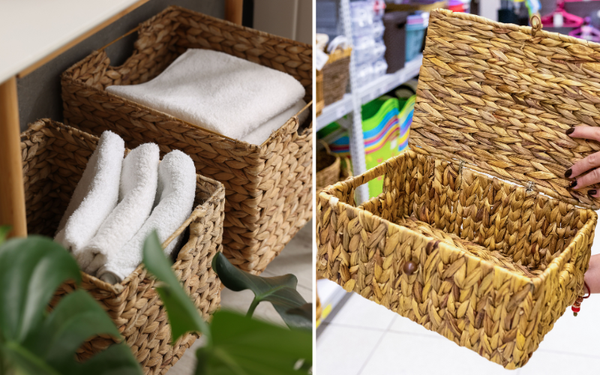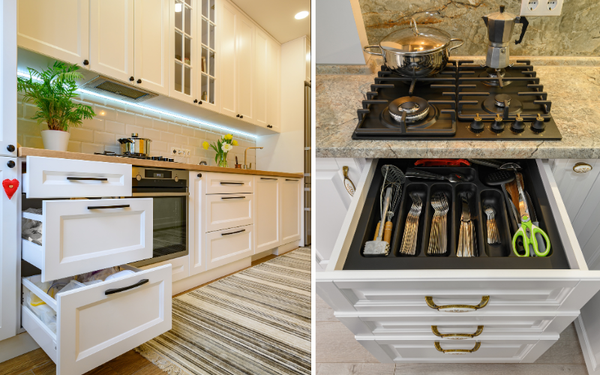Struggling with dust clouds every time you clean? You’re not alone. Discovering “how do you dust without getting dust everywhere” is key to a clean and allergen-free home. This article outlines simple yet effective strategies and tools to capture dust without it resettling, keeping your spaces clean and clear. Get ready for efficient dusting techniques that promise real results with the answer to how do you dust without getting dust everywhere.
Key Takeaways
- Effective dusting requires appropriate tools such as microfiber cloths, soft-brush vacuum attachments, and electrostatic mops; and a correct method, like using a top-down cleaning technique to prevent resettling of dust.
- Electronics need cautious dusting with microfiber cloths and vacuum attachments, while hard floors benefit from regular vacuuming with a HEPA filter and damp mopping; carpets and rugs require a no-shoes policy, doormats, and regular deep cleaning.
- Minimize dust accumulation through maintenance of pet dander with regular grooming, use of air purifiers and humidity controls to reduce airborne particles, and decluttering to decrease the amount of surfaces where dust can settle.
The Right Tools for Effective Dusting

When it comes to dusting, the mightiest weapons in your arsenal are:
- Microfiber cloths: Unlike feather dusters that fling dust particles back into the air, microfiber cloths act like magnets, trapping dust through static attraction. This means you’re not just moving dust around; you’re actually removing it from the equation.
- Soft-brush vacuum attachments: For those challenging nooks, crannies, and heavy dust situations, soft-brush vacuum attachments come to the rescue, capturing fine particles and ensuring they don’t escape back into your sanctuary.
- Electrostatic mops: Electrostatic mops are also great for capturing fine particles and preventing them from escaping back into the air.
With these tools, including a feather duster, you can tackle any dusting challenge and ensure your space doesn’t collect dust, keeping it clean and trap dust-free.
But what about those sleek surfaces that seem to attract fingerprints and dust with equal vigor? Enter the damp cloth again, but this time, ensure it’s a clean microfiber cloth, slightly dampened. After wiping with the damp cloth, use a dry microfiber cloth to ensure a streak-free finish, which is a dream come true for any cleaning enthusiast. Remember, the goal isn’t to spread more dust around – it’s to trap and remove it, and using the right tools is your first step to victory.
Top-Down Cleaning Technique
Ever dusted a shelf only to find the dust resettling on it moments later? It’s enough to make anyone throw their dust cloths in defeat. But wait—there’s a method to the madness. It’s called the top-down cleaning technique, and it’s a game-changer. Start by banishing cobwebs and dust from the highest points—your ceiling and light fixtures. This strategy ensures any dislodged dust falls downwards, onto surfaces you haven’t cleaned yet.
As you move from top to bottom, work in a left to right pattern, ensuring every surface gets attention without the need to re-clean. By the time you reach your furniture and fixtures, any dust you disturb only ends up on the floor, which is the last area you’ll tackle. When you finally sweep, vacuum, or mop the floor, you’re capturing all the dust that’s cascaded down during your top-down assault.
This method isn’t just effective; it’s incredibly satisfying to see each level of your home conquered, dust-free, and gleaming.
Tackling Electronics with Care
We live in an age where our homes are as much a habitat for electronics as they are for us. But with great technology comes great dust-attracting responsibility. Before you dive in, unplug your devices to prevent any electrical mishaps and to get your electronics ready for a safe clean. With your trusty microfiber cloth or duster in hand, gently wipe away the accumulated dust, making sure you’re not just pushing it into the crevices of your devices.
And what about those hard-to-reach places, like around cords and vents? This is where your vacuum, armed with the right attachment, becomes your best ally, pulling vacuum dust from the places where cloths can’t reach. Consider dust covers for when your electronics are not in use. They may not be the most glamorous of accessories, but they’re incredibly effective at keeping external particles at bay and extending the life of your devices.
Maintaining Hard Floors

Hard floors can be a blessing and a curse. They’re easy to clean, yet they showcase every speck of dust like a museum display. The key to keeping them pristine is a weekly rendezvous with your vacuum cleaner. For hardwood floors, choose a vacuum without a beater bar, or use a microfiber mop to trap the dust without scratching the surface. When it’s time for a deeper clean, treat your floors to a specialized cleaner and a damp mop, taking care not to leave standing water behind.
If you’re an allergy sufferer, or just a fan of breathing cleaner air, a vacuum with a HEPA filter is a must-have. It traps even the finest particles and prevents them from staging an airborne rebellion in your home. Remember, maintaining your hard floors isn’t just about aesthetics; it’s about creating a healthier living space, free of dust and the allergens that often accompany it.
Dealing with Carpets and Rugs
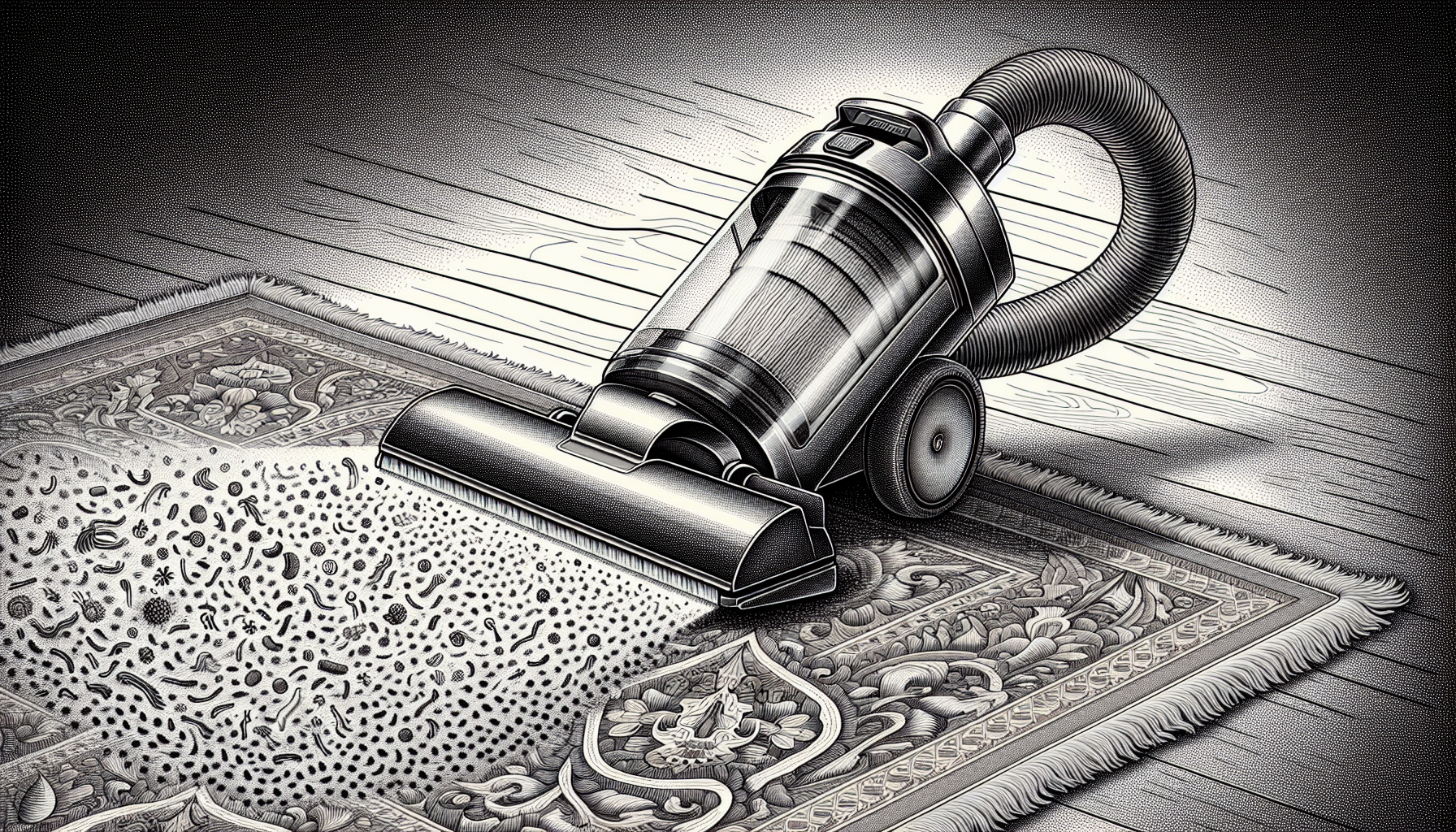
Carpets and rugs add warmth and texture to our homes, but they’re also masters at harboring dust. To keep them from becoming dust reservoirs, here are some tips:
- Establish a no-shoes policy
- Lay out welcoming doormats to capture dirt before it can invade your cozy carpets
- Regularly vacuum with a HEPA filter-equipped cleaner to pull dust out from between those fibrous hideaways
And when it comes to deep cleaning, it’s time to take those rugs outdoors for a good shake or beat, releasing the dust back into the wild where it belongs. For smaller, machine-washable mats, let the warm embrace of your washer do the heavy lifting, ensuring a fresh, dust-free return to your floors. These simple habits will not only improve the air quality in your home but also extend the life of your beloved carpets and rugs.
Ceiling Fan and Light Fixture Maintenance
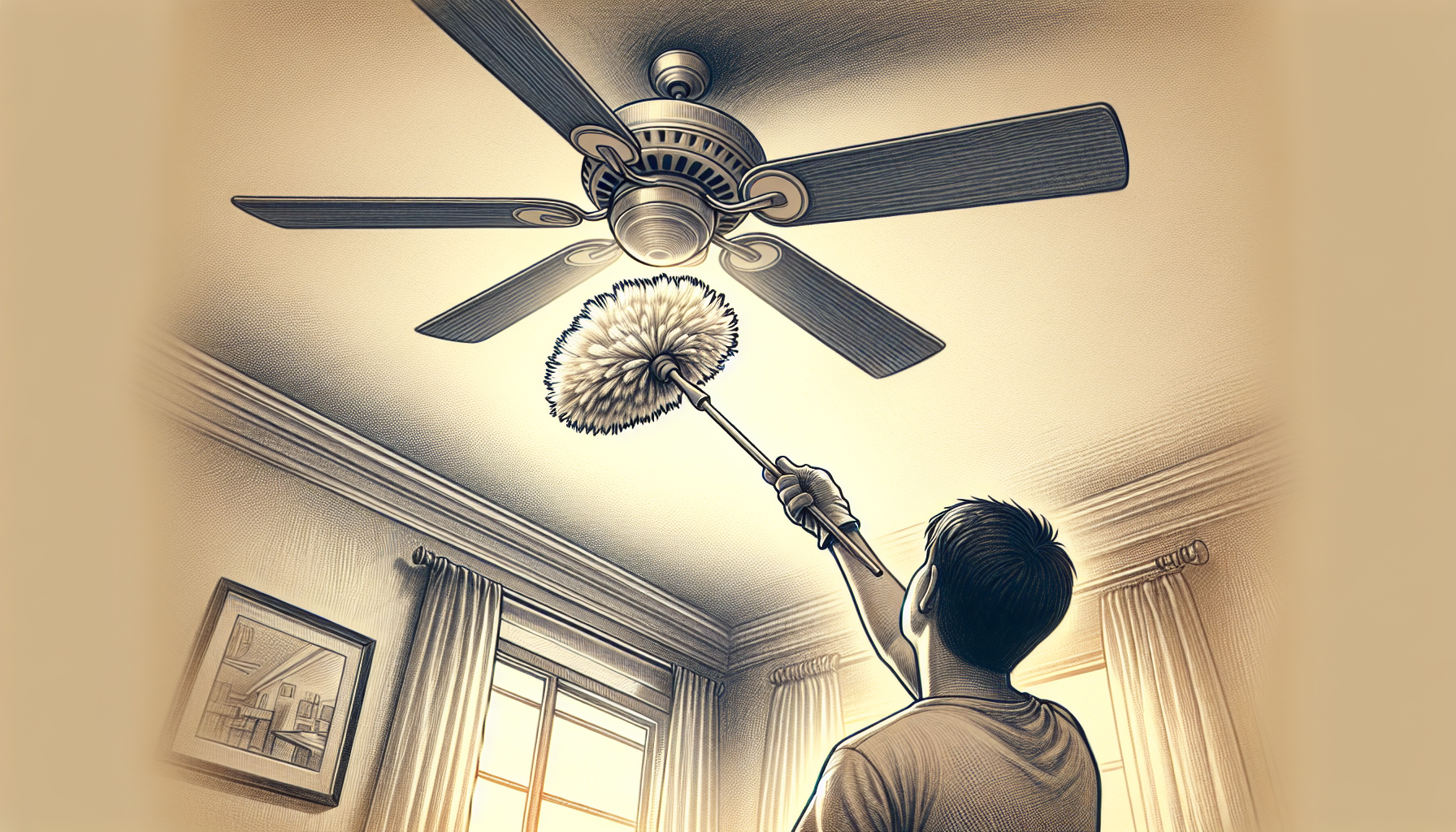
Ceiling fans and light fixtures are the silent guardians of our rooms, tirelessly working above our heads, often forgotten until we look up and notice the dust bunnies holding a convention on them. To tackle these, first ensure your power is off for a safe cleaning experience. Whether you’re using an extendable duster or a vacuum with the appropriate attachment, make sure you’re ready to engage with the dust where it lays.
For a more thorough clean, here are some tips:
- Use an old pillowcase to clean fan blades. Slip it over each blade and pull it off to trap the dust.
- Use a damp microfiber cloth to gently clean light fixtures.
- Don’t forget to clean chains and recessed lighting with regular wiping and dusting.
These tips will help keep your fans and light fixtures sparkling clean.
Curtains, Blinds, and Window Treatments
The windows to our world, quite literally, come with their own set of dust challenges. If you’re in the market for new window treatments, consider those that are easier to clean, like washable curtains or roller shades, instead of dust-prone slatted blinds. Heavy drapes, while luxurious, can be a magnet for dust and require more frequent care.
For those with wooden blinds, a gentle touch with a wood-safe cleaner or a damp microfiber cloth is all you need to keep them pristine without causing moisture damage. And for the more durable vinyl blinds, a simple solution of dish soap and water does wonders. If they’re particularly rebellious, a bathtub session can leave them looking as good as new, all without risking material damage.
Remember, the key to managing dust on window treatments is choosing materials that align with your cleaning habits and lifestyle, so make sure to dust regularly to prevent dust.
Managing Pet-Related Dust
Our furry friends, as much as we adore them, are prolific producers of pet dander and hair. To keep this pet-related dust under control, regular grooming and weekly baths are essential. The couch covers and pet beds that provide comfort for our pets should also be on our cleaning radar, as washing them regularly prevents dust from becoming a permanent guest in our homes.
Creating an ‘allergy free’ zone, particularly in the bedroom, can provide a sanctuary from pet-related dust for those with allergies or sensitivities. By following these simple tips, you’ll not only have a happier, healthier pet but also a fresher, cleaner living environment for everyone in the household.
Air Purifiers and Humidity Control
Air purifiers and the right humidity levels are the silent heroes in the fight against dust. A vacuum cleaner with a HEPA filter is a great start, capturing those tiny particles that would otherwise float around your home. An air purifier takes it a step further, trapping airborne particles and reducing the number of dust mites and other allergens that can trigger reactions.
Maintaining indoor humidity levels between 40-60% can also play a significant role. Not only does it reduce the time dust stays airborne, but it also helps to prevent the buildup of dust on electronics and other surfaces. A whole-house humidifier can be an excellent investment, ensuring that the air in your home helps rather than hinders your dusting efforts.
Decluttering and Organizing
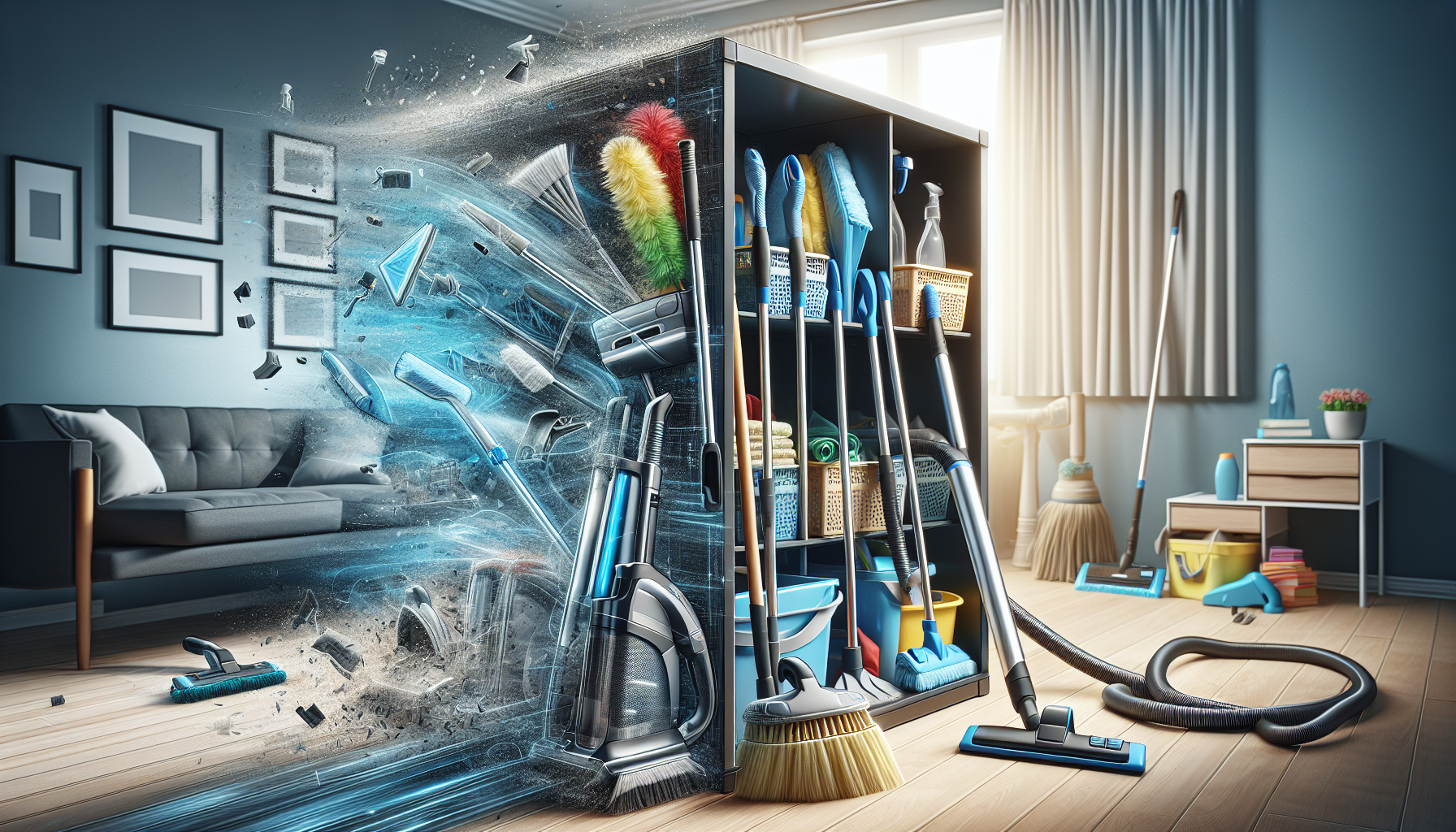
A cluttered home is a haven for dust, offering countless surfaces for dust to settle on and hide behind. By decluttering, you reduce the number of dust traps and make cleaning a much more straightforward task. Keep only what brings you joy or serves a purpose, and you’ll find that not only does your space look better, but it’s also easier to keep dust at bay.
Start small in your decluttering journey, focusing on one room at a time. As you clear the clutter, you’ll find that dusting becomes less of a chore and more of an effortless part of your routine. Plus, the psychological boost of a tidy, organized space is a fantastic bonus, making your home a more calming and welcoming place.
Summary
Embracing these efficient dusting methods and tools will transform your home into a dust-free haven. From the strategic top-down cleaning technique to the careful maintenance of every surface and item, you’re now equipped to tackle dust like never before. Remember, the battle against dust is won through consistency and the right approach, leaving you with a cleaner, healthier home to enjoy.
Frequently Asked Questions
Can I use a regular duster instead of a microfiber cloth?
Using a microfiber cloth is more effective at trapping and holding dust without dispersing it into the air, so it's best to use it instead of a regular duster.
How often should I dust my home?
You should dust your home at least once a week to prevent dust buildup. Using the top-down method will make each session more effective.
Is it safe to vacuum electronics?
Yes, it is safe to vacuum electronics as long as you unplug them and use a suitable attachment to reduce the risk of static electricity.
Can air purifiers really help with dust?
Yes, air purifiers with HEPA filters can effectively reduce dust in your home and improve your indoor air quality.
Does decluttering actually help with dusting?
Decluttering helps with dusting because it removes unnecessary items that collect dust, making the cleaning process more efficient and less time-consuming.
You Might Also Like...







